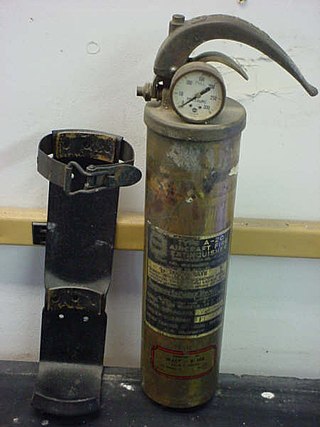Top Qs
Timeline
Chat
Perspective
Bromochloromethane
Chemical compound From Wikipedia, the free encyclopedia
Remove ads
Bromochloromethane or methylene bromochloride and Halon 1011 is a mixed halomethane. It is a heavy low-viscosity liquid with refractive index 1.4808.
Halon 1011 was invented for use in fire extinguishers in Germany during the mid-1940s, in an attempt to create a less toxic, more effective alternative to carbon tetrachloride. This was a concern in aircraft and tanks as carbon tetrachloride produced highly toxic by-products when discharged onto a fire. It was slightly less toxic, and used up until the late 1960s, being officially banned by the NFPA for use in fire extinguishers in 1969, as safer and more effective agents such as halon 1211 and 1301 were developed. Due to its ozone depletion potential its production was banned from January 1, 2002, at the Eleventh Meeting of the Parties for the Montreal Protocol on Substances that Deplete the Ozone Layer.


Bromochloromethane's biodegradation is catalyzed by the hydrolase enzyme alkylhalidase:
- CH2BrCl + H2O → CH2O + HBr + HCl
Remove ads
Preparation
Bromochloromethane is prepared commercially from dichloromethane:
- 6 CH2Cl2 + 3 Br2 + 2 Al → 6 CH2BrCl + 2 AlCl3
- CH2Cl2 + HBr → CH2BrCl + HCl
The latter route requires aluminium trichloride as a catalyst. The bromochloromethane is often used as a precursor to methylene bromide.[3]
References
External links
Wikiwand - on
Seamless Wikipedia browsing. On steroids.
Remove ads




